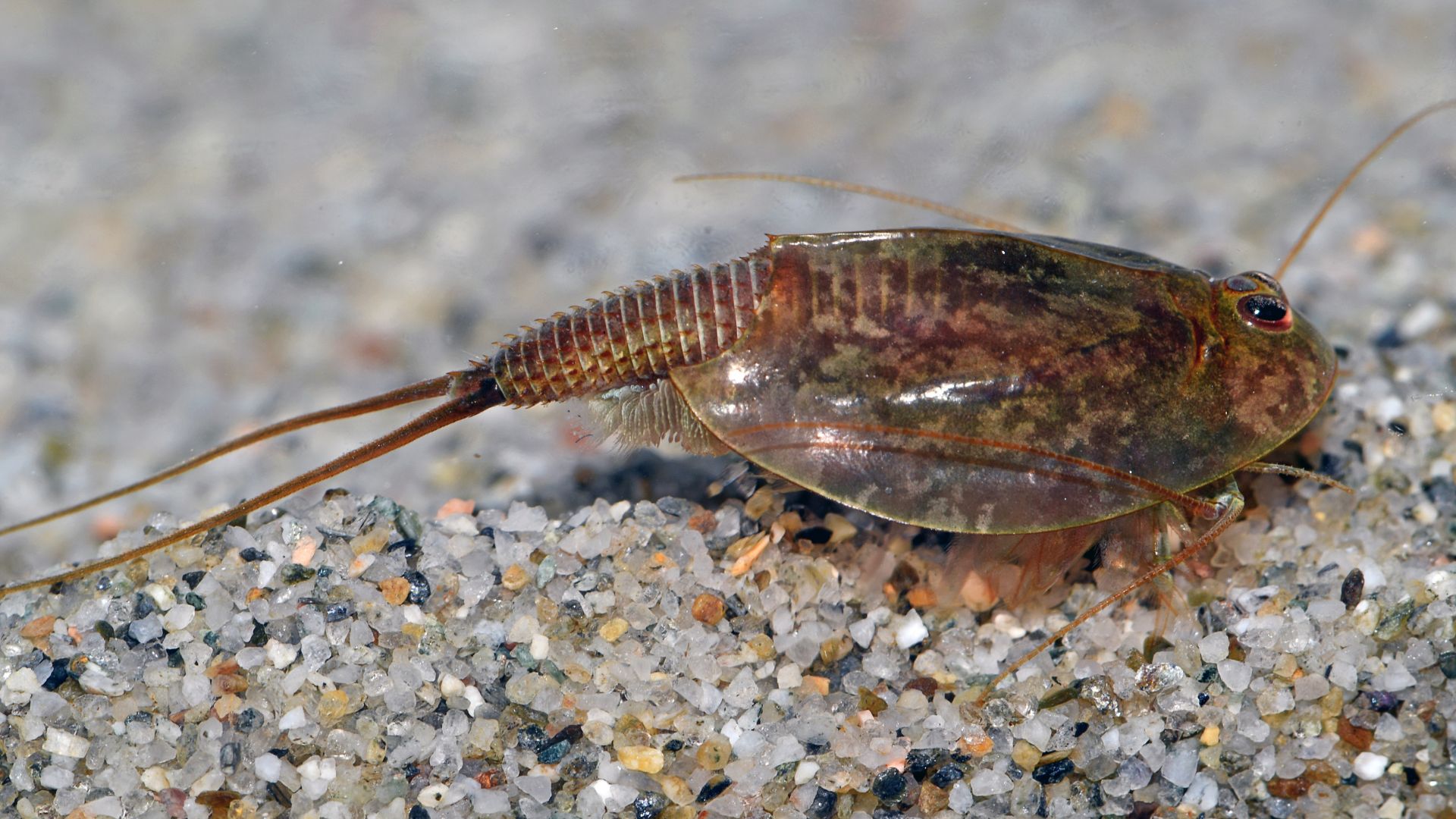When we think of ancient creatures, dinosaurs often come to mind. However, there are remarkable sea creatures that have been swimming in our oceans long before the first dinosaur roamed the Earth.
These extraordinary beings have survived mass extinctions and environmental changes that wiped out many other species, showcasing their resilience and adaptability.
Let’s see which ancient sea creatures have withstood the test of time, providing a glimpse into Earth’s distant past.
1. Horseshoe Crab
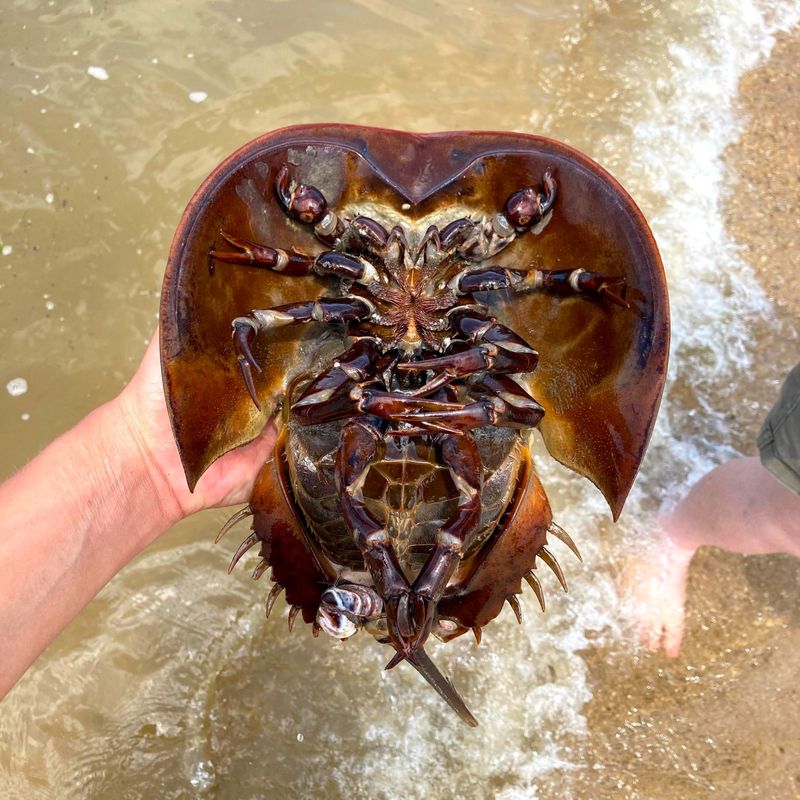
The horseshoe crab is a living fossil, having existed for over 450 million years, predating dinosaurs by about 200 million years. This resilient arthropod has survived five mass extinctions, largely unchanged in its physical form.
Its hard exoskeleton and long, pointed tail, known as a telson, are distinctive features that have allowed it to endure through the ages.
Found in shallow coastal waters, primarily along the eastern coast of North America and Southeast Asia, horseshoe crabs play a crucial role in their ecosystems. They are a vital food source for migrating birds and provide valuable insights into evolutionary biology.
Interestingly, their blue blood is used in the medical field to detect bacterial endotoxins, highlighting their importance beyond their ecological role.
Despite their ancient lineage, horseshoe crabs face modern threats from habitat destruction and overharvesting for bait and biomedical purposes. Conservation efforts are essential to protect these ancient survivors and ensure they continue their journey through time.
This incredible creature serves as a reminder of the Earth’s rich biological history and the importance of preserving biodiversity.
2. Nautilus
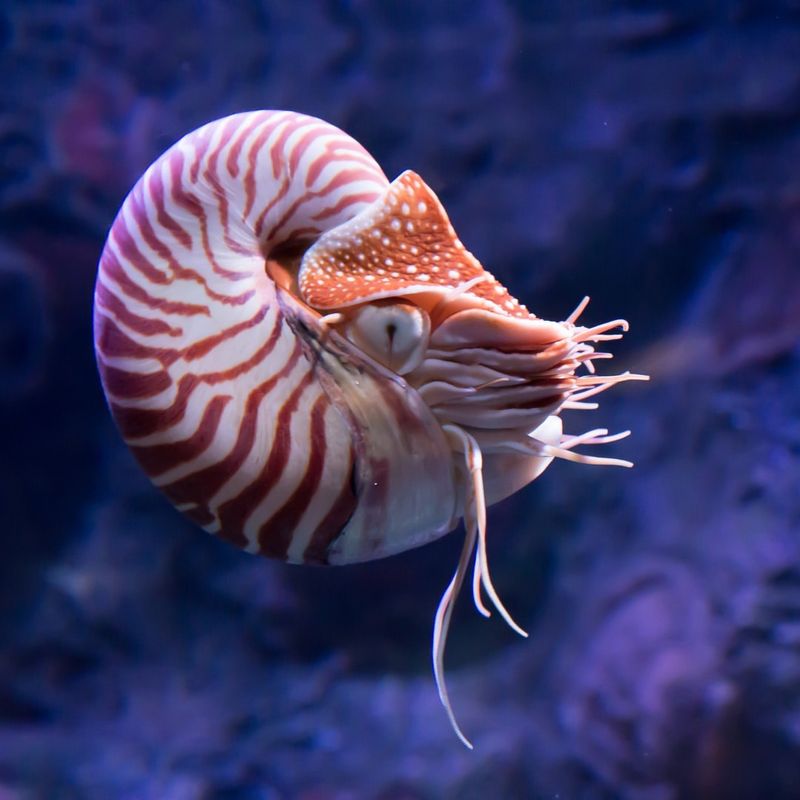
The nautilus, with its iconic spiral shell, is a mesmerizing cephalopod that has graced Earth’s oceans for over 500 million years. This marine wonder is older than dinosaurs, having survived multiple mass extinction events.
Its shell, divided into chambers filled with gas, allows it to regulate buoyancy and navigate the deep ocean with ease.
Primarily found in the Indo-Pacific region, nautiluses inhabit deep reef slopes, ascending to shallower waters at night to feed. Their diet mainly consists of small fish and crustaceans, captured using their numerous tentacles.
Nautiluses are unique among cephalopods due to their external shells, which not only provide protection but also create a visually striking pattern that captivates marine enthusiasts.
Despite their ancient survival skills, nautiluses are currently under threat from overfishing and habitat destruction, driven by the demand for their ornamental shells. Conservation measures are vital to ensure these fascinating relics of ancient seas continue to thrive.
Their continued existence offers a glimpse into the past and underscores the importance of preserving our planet’s diverse and ancient marine life.
3. Jellyfish
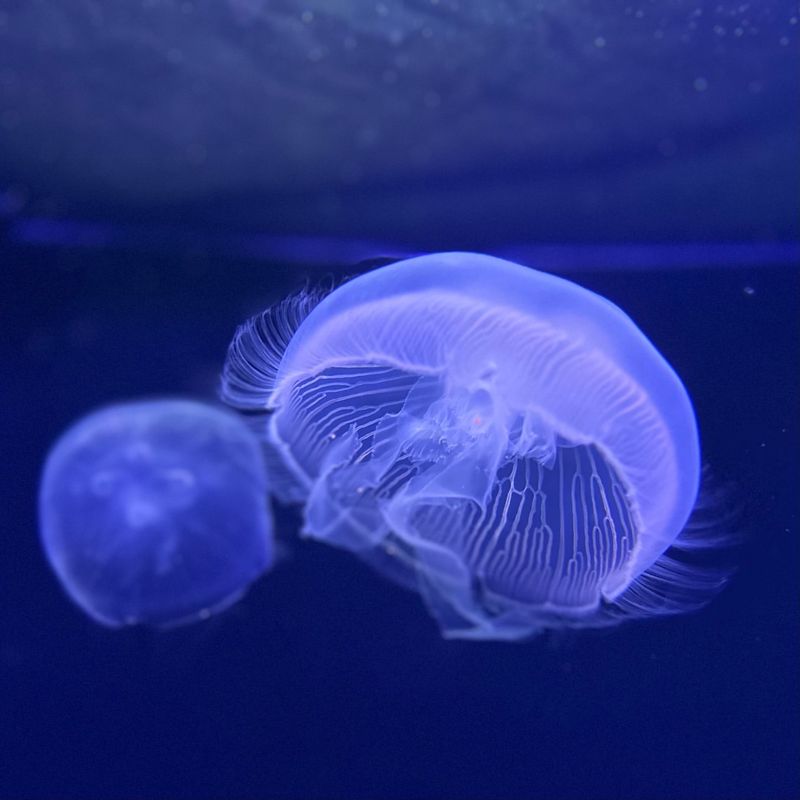
Jellyfish are among the oldest living organisms, with a history stretching back over 500 million years, long before dinosaurs walked the Earth. These gelatinous creatures are marvels of evolution, having adapted to survive in various marine environments worldwide.
Their simple body structure, lacking a brain, heart, or bones, is composed mostly of water, allowing them to drift with ocean currents.
Jellyfish can be found in every ocean, from surface waters to the deep sea, exhibiting a wide range of sizes and colors. They possess specialized cells known as cnidocytes, which contain stinging structures used for capturing prey and deterring predators.
Despite their lack of complexity, jellyfish play a significant role in marine ecosystems as both predators and prey.
The rise in jellyfish populations in certain areas has raised concerns about their impact on fisheries and marine biodiversity. Climate change and overfishing of their natural predators have been linked to these population surges.
Understanding these ancient creatures and their ecological role is crucial for managing their populations and maintaining the health of our oceans. Jellyfish remind us of the delicate balance within marine ecosystems, shaped over millions of years.
4. Green Sea Turtle
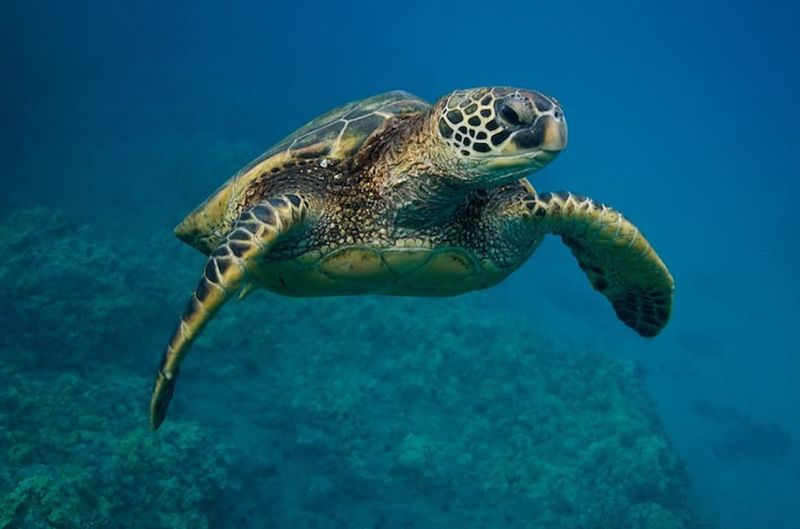
Green sea turtles have been navigating the world’s oceans for over 150 million years, predating the existence of dinosaurs.
These magnificent reptiles have evolved to thrive in marine habitats, with streamlined bodies and strong flippers that make them excellent swimmers. Green sea turtles are named for the green color of their body fat, a result of their herbivorous diet.
Found in tropical and subtropical waters around the globe, these turtles spend most of their lives in the ocean, migrating long distances between feeding grounds and nesting sites. Female turtles return to the same beaches where they hatched to lay their eggs, demonstrating an incredible navigational ability.
Despite their ancient lineage, green sea turtles face numerous threats, including habitat loss, pollution, and poaching for their eggs and shells.
Conservation efforts are crucial to protect nesting sites and marine habitats, ensuring these ancient mariners continue to grace our oceans. By preserving green sea turtles, we are safeguarding a piece of Earth’s ancient heritage and maintaining the biodiversity of marine ecosystems.
5. Sturgeon
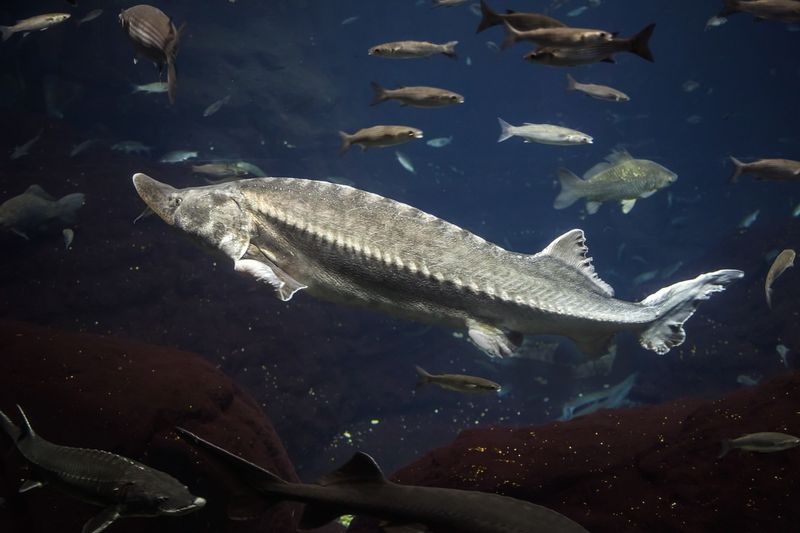
Sturgeon have been swimming in Earth’s waters for approximately 200 million years, making them older than many dinosaur species. These ancient fish are renowned for their distinctive appearance, characterized by an elongated body and bony scutes along their sides.
Sturgeon are primarily found in the Northern Hemisphere, inhabiting both freshwater and saltwater environments.
Known for their remarkable size, sturgeons can grow to be several meters long and are often referred to as “living dinosaurs.” They undertake long migrations between feeding and spawning grounds, showcasing their adaptability and resilience.
Unfortunately, sturgeon populations have declined significantly due to overfishing and habitat degradation, particularly for their prized roe, used in caviar production.
Conservation efforts are critical to protect these ancient fish and their habitats. Sturgeon play a vital role in aquatic ecosystems, contributing to nutrient cycling and maintaining the health of riverine and coastal environments.
By safeguarding sturgeon, we are preserving a link to the prehistoric past and ensuring the continued diversity of aquatic life on our planet.
6. Leatherback Sea Turtle
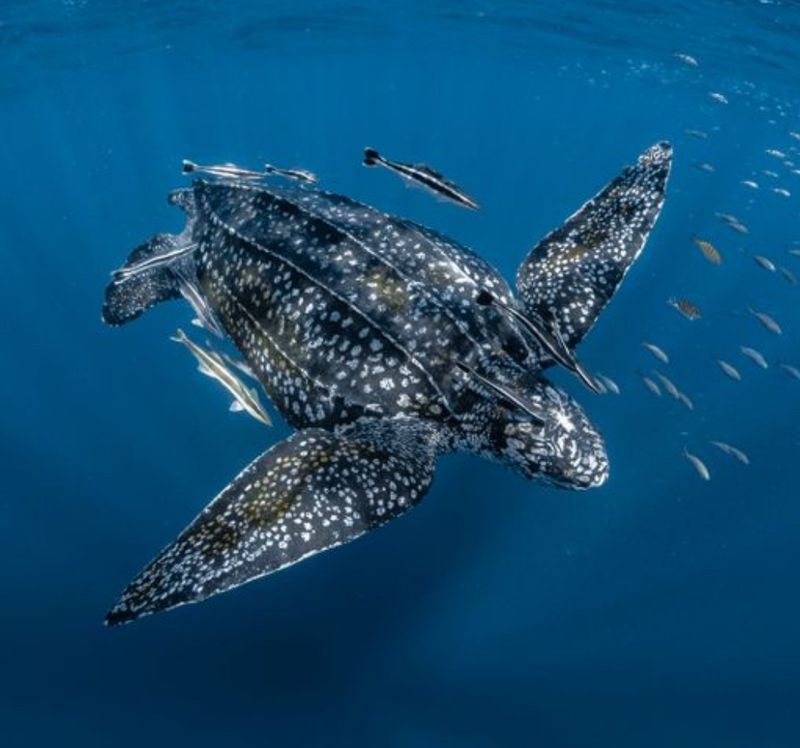
Leatherback sea turtles are the largest of all sea turtle species and have been inhabiting Earth’s oceans for over 100 million years, predating many dinosaur species.
Their distinct leathery shell, unlike the hard shells of other turtles, gives them their name and allows them to dive to great depths in search of jellyfish, their primary prey.
These ancient mariners migrate across entire ocean basins, traversing thousands of miles between feeding and nesting areas. Leatherbacks are found in tropical and subtropical oceans worldwide, with nesting sites located on sandy beaches.
Female turtles return to the beaches where they hatched to lay their eggs, a behavior that has persisted for millions of years.
Despite their ancient resilience, leatherback sea turtles face numerous threats, including habitat destruction, bycatch in fishing gear, and marine pollution.
Conservation initiatives aimed at protecting nesting sites and reducing bycatch are essential to ensure the survival of these ancient creatures. Leatherback turtles provide a vital connection to our planet’s deep past and highlight the need for preserving the diverse life forms that inhabit our oceans.
7. Coelacanth
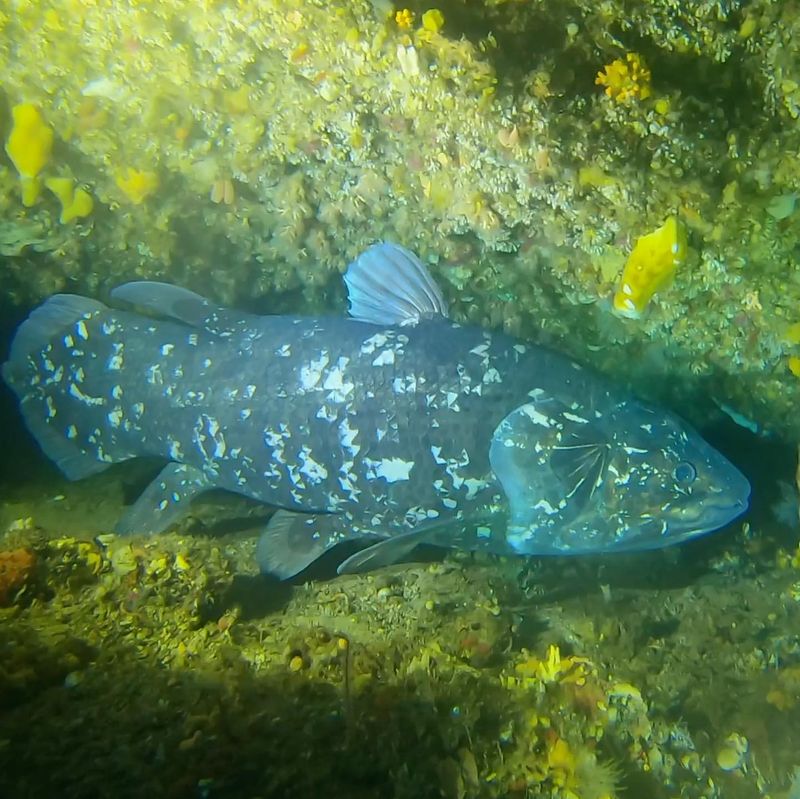
The coelacanth is a fascinating creature that has captured the imagination of scientists and the public alike. Known as a “living fossil,” this ancient fish lineage dates back over 400 million years, surviving the mass extinction that wiped out the dinosaurs.
Coelacanths were once thought to be extinct until a live specimen was discovered in 1938 off the coast of South Africa.
Coelacanths are found in deep marine waters, often near volcanic islands or steep submarine slopes in the Indian Ocean. They are characterized by their lobed pectoral and pelvic fins, which resemble the limbs of land vertebrates, offering insights into the evolutionary transition from sea to land.
These elusive creatures are critically endangered, with populations threatened by deep-sea fishing and habitat degradation. Efforts to study and protect coelacanths are pivotal in understanding evolutionary history and conserving biodiversity.
The coelacanth’s survival offers a unique glimpse into the ancient past, reminding us of the intricate and interconnected history of life on Earth.
8. Shark
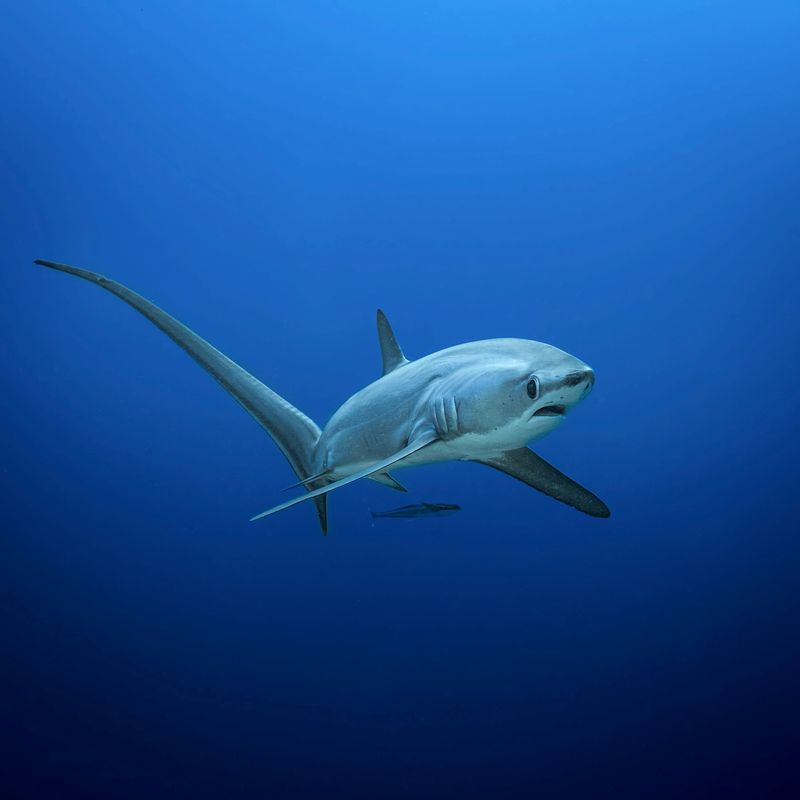
Sharks have been patrolling Earth’s oceans for over 400 million years, making them older than dinosaurs and even trees. These ancient predators have evolved into a myriad of forms, with adaptations that have ensured their survival through countless environmental changes.
Their streamlined bodies and keen senses make them formidable hunters, playing a crucial role in maintaining the balance of marine ecosystems.
Found in oceans across the globe, sharks vary greatly in size and behavior, from the massive whale shark to the agile reef shark. They are apex predators, regulating populations of other marine species and contributing to the health of ocean habitats.
The diversity and adaptability of sharks are a testament to their evolutionary success. Despite their resilience, many shark species face threats from overfishing, habitat loss, and climate change.
Conservation efforts focused on sustainable fishing practices and habitat protection are vital to ensure the continued presence of these iconic creatures. Sharks are not only a link to our planet’s distant past but also an integral part of its ecological future.
9. Sea Sponge
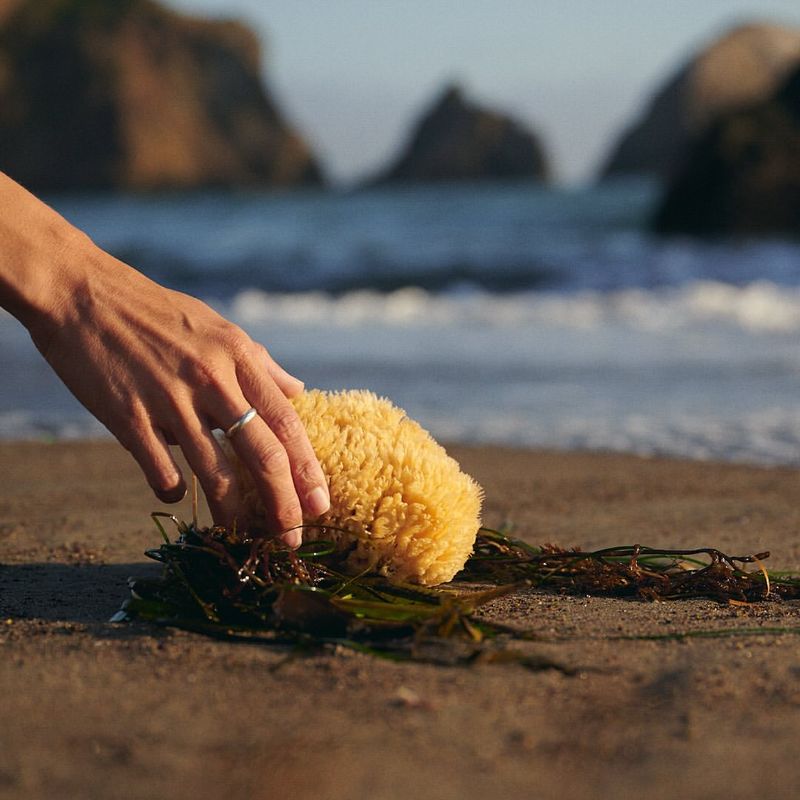
Sea sponges are among the oldest multicellular organisms on Earth, dating back over 600 million years, far surpassing the age of dinosaurs.
These simple, yet fascinating creatures have thrived throughout evolutionary history, adapting to a wide range of marine environments.
Sea sponges are essential components of ocean ecosystems, providing habitat and food for a multitude of marine organisms. Found in oceans worldwide, sponges exhibit remarkable diversity in size, shape, and color, playing a vital role in nutrient cycling and water filtration.
Their porous bodies allow them to filter vast quantities of water, removing bacteria and organic matter, which supports marine biodiversity.
Despite their ancient lineage, sea sponges are vulnerable to threats such as pollution, climate change, and destructive fishing practices. Protecting these ancient creatures is crucial for maintaining healthy ocean ecosystems and ensuring the sustainability of marine resources.
Sea sponges remind us of the complex and ancient web of life that supports our planet’s diverse aquatic habitats.
10. Triops
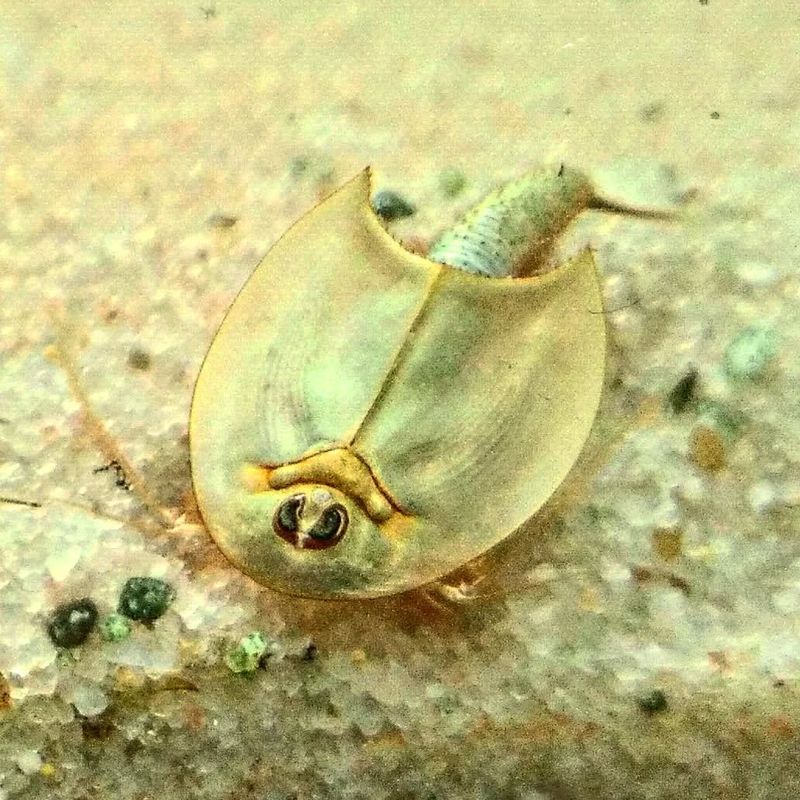
Triops, commonly known as “tadpole shrimp,” are fascinating crustaceans that have been around for over 300 million years, predating dinosaurs.
These small creatures, with their shield-like carapace and extended tails, are often found in temporary ponds and freshwater habitats around the world.
Triops are renowned for their ability to survive in extreme environmental conditions, making them resilient survivors of Earth’s historical upheavals. Triops have a unique reproductive strategy, with the ability to reproduce both sexually and asexually, depending on environmental conditions.
This flexibility has allowed them to thrive in temporary habitats, where they can lay drought-resistant eggs that remain dormant until favorable conditions return. Despite their ancient resilience, triops face threats from habitat destruction and pollution.
Maintaining healthy freshwater ecosystems is vital for their survival and offers opportunities to study evolutionary biology and adaptability. Triops serve as living connections to Earth’s ancient past, showcasing the enduring nature of life on this planet.
11. Dugong
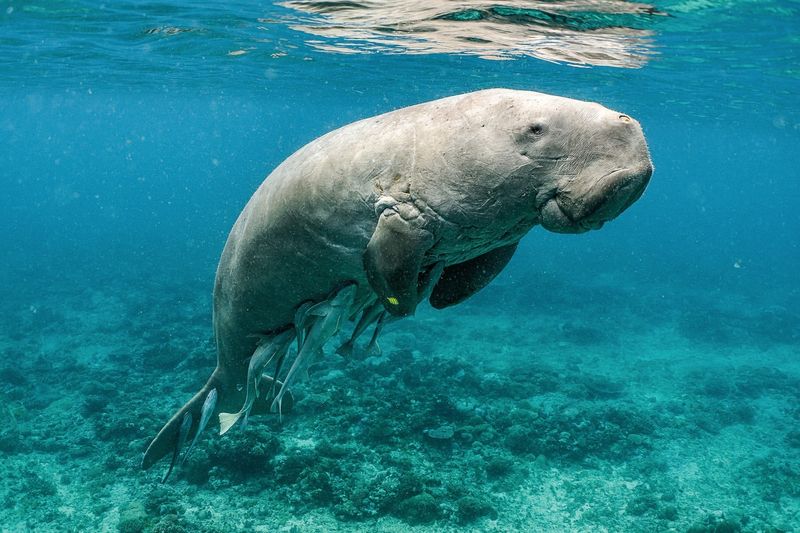
Dugongs, often referred to as “sea cows,” have roamed Earth’s coastal waters for over 50 million years, sharing the ancient seas with early ancestors of dinosaurs.
These gentle marine mammals are closely related to manatees and are known for their slow, graceful movements as they graze on seagrass beds in warm, shallow waters.
Dugongs are primarily found in the Indo-Pacific region and play a crucial role in maintaining the health of seagrass ecosystems. Their feeding activities help to promote seagrass growth and productivity, which supports a diverse array of marine life.
Despite their ancient lineage, dugongs face numerous threats, including habitat loss, boat collisions, and entanglement in fishing gear.
Conservation efforts focused on protecting seagrass habitats and reducing human-induced threats are essential for safeguarding these ancient marine herbivores.
Dugongs remind us of the interconnectedness of marine ecosystems and the importance of preserving the delicate balance that has sustained life in our oceans for millions of years.
12. Scallop
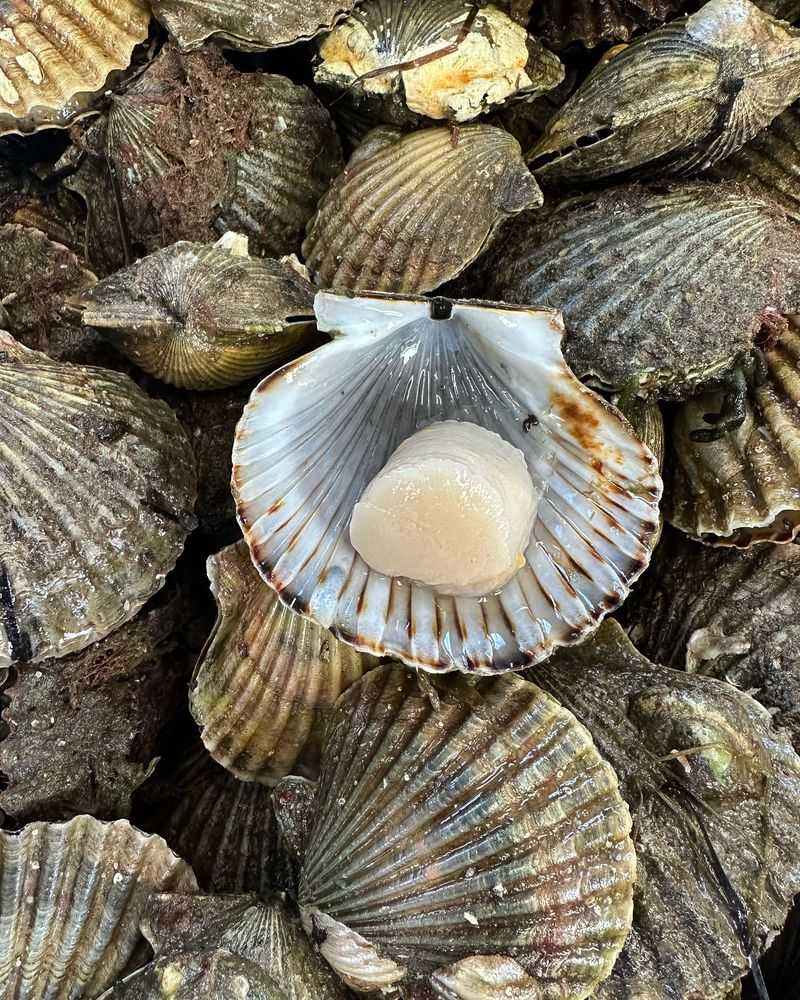
Scallops are ancient marine bivalves that have existed for over 200 million years, predating the age of dinosaurs.
Known for their distinctive ribbed shells and ability to “swim” by clapping their shells together, scallops are fascinating creatures that inhabit a variety of marine environments worldwide.
These filter feeders play a significant role in the ocean ecosystem, helping to maintain water quality by filtering plankton and organic matter from the seawater.
Scallops are also an important food source for a variety of marine predators, including sea stars and crabs, contributing to the complex food web of marine life.
Despite their longevity, scallops face challenges from overfishing, habitat destruction, and ocean acidification, which threaten their populations and the ecosystems they support.
Sustainable fishing practices and habitat conservation efforts are vital to ensuring the continued survival of these ancient sea dwellers. By protecting scallops, we preserve a crucial part of the marine ecosystem and honor the rich biological heritage of our planet.
13. Clam
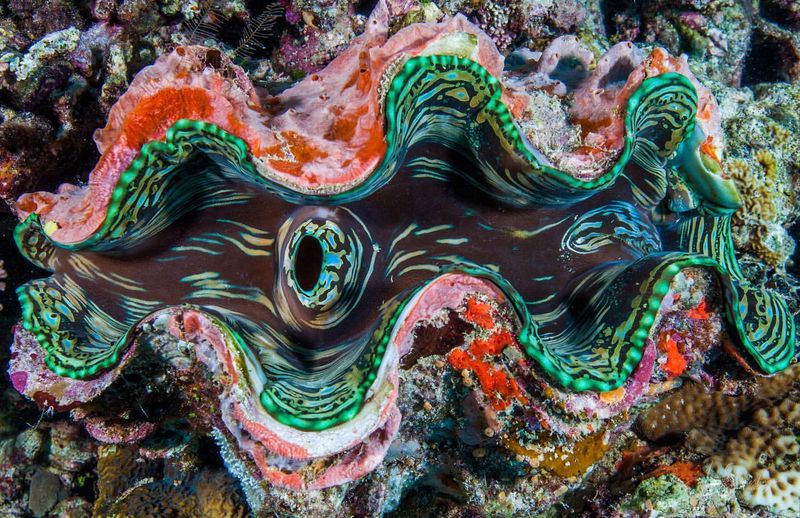
Clams are ancient bivalves that have thrived in Earth’s oceans for over 500 million years, outliving many dinosaur species.
These remarkable mollusks are known for their two-part shells and ability to burrow into sand or attach to rocky substrates. Clams are integral components of marine ecosystems, acting as filter feeders that help maintain water quality by removing plankton and suspended particles.
Found in diverse marine environments from shallow coastal waters to deep ocean floors, clams exhibit a wide range of sizes and forms. They play a crucial role in nutrient cycling and provide habitat for various marine organisms.
Giant clams, in particular, are renowned for their symbiotic relationship with photosynthetic algae, which live within their tissues and contribute to the vibrant colors of their mantles.
Despite their ancient lineage, clams face threats from overharvesting, habitat destruction, and climate change. Conservation efforts aimed at protecting clam habitats and promoting sustainable harvesting practices are essential to ensure the survival of these ancient creatures.
Clams remind us of the enduring legacy of life in Earth’s oceans and the importance of preserving marine biodiversity.

